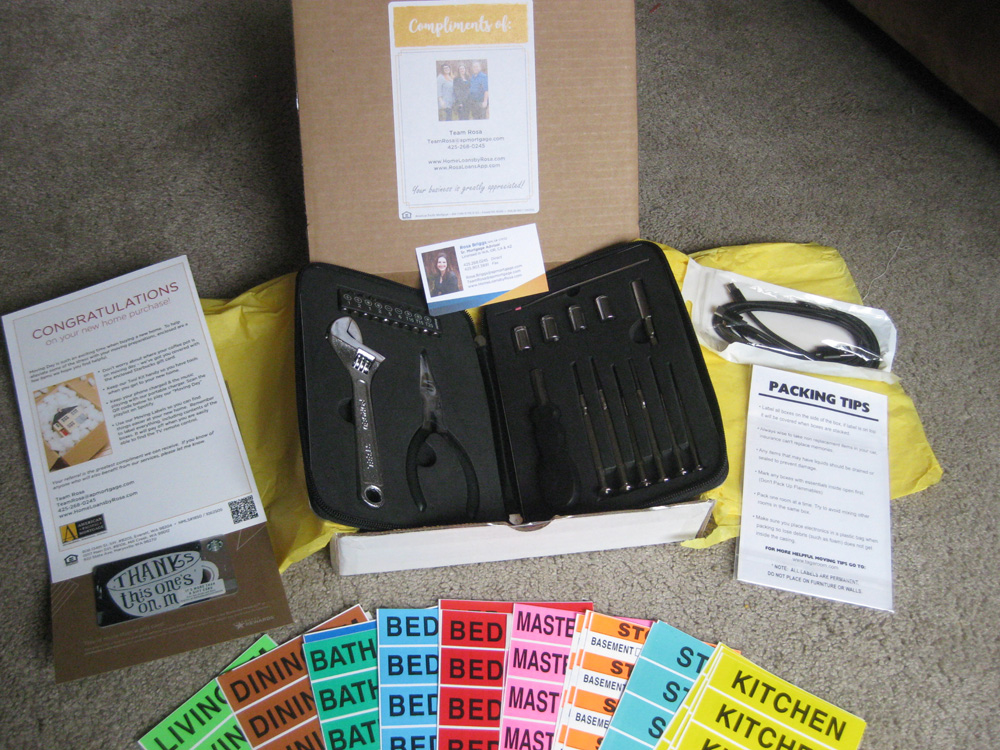Customer Service Power Plays with Direct Mail, Email, and Phone for Nonprofits AND Businesses
How to Get Attention, Produce Loyalty, and Generate Effortless Referrals (with real examples from my real estate lender)
Do businesses need to stand out with eye-popping customer service that blasts far beyond the expectations of their customers? Yes, but only if they want to thrive in an ever more competitive world.
Do nonprofits need to do this too?
Yes, and for the same reasons.
Nonprofits aren’t businesses, but they’re competing against businesses and other nonprofits anyway, whether they think about it in those terms or not.
What are nonprofits and businesses alike competing for?
- Time – because no one has enough
- Money – duh
- Attention – there is no such thing as multitasking – the human brain can only devote attention to one thing at a time
- Loyalty – nonprofits need recurring and committed supporters, just like businesses need repeat customers
- Referrals – this is the whole basis behind peer-to-peer fundraising – getting your supporters to tell others about you
As a nonprofit, you might think fulfilling your mission is all that matters. And you might think that all you need to fulfill it is money. But to win more donors, it takes a whole lot more than that.
You have to get them to care. Then, you have to get them to keep caring. And then, you have to get them to tell others why they should care too.
Attention, loyalty, and referrals.
This is the heartbeat behind growth, for nonprofits and businesses alike. There is no difference here.
Customer Service from a Real Estate Lender
The rest of this article is an example of how this can look, based on my experience with a real estate lender. And please allow me to be real for a second. I don’t like real estate lenders. I’ve spent more than two years struggling against them and their heartless, senseless computers that seize on the most inane pieces of data they can find to reject what should be a dream loan candidate from getting a loan.
Just one example of dozens I could share – my wife switched jobs to one that paid her MORE money, and this put our loan status in jeopardy. Why? Because both jobs were part time. Does that make sense? Only to a computer…
Anyway – we don’t have room to go off on real estate lenders. But here’s the amazing thing: We’re about to finally get a home, and we have a lender to thank – Rosa Briggs from American Pacific Mortgage – who has blown away all previous lenders by miles.
If all other lenders were statues in a park, Rosa is an Egyptian pyramid.
How did Rosa’s team serve us so well, and what can your nonprofit or business learn from her about getting attention and building loyalty through customer service? Read on to find out.
 How to Get Attention: Steal Their Reasons to Complain
How to Get Attention: Steal Their Reasons to Complain
Everyone uses the word ‘proactive’. Even a certain website you may be on right now.
But what does it mean, and how can you be proactive in such a way to get and hold the attention of donors and customers?
One of the best ways to get attention is to pre-empt any chance people have to gripe. In others words – get their attention through proactive customer service that meets relevant and timely needs.
To get the jump on any complaints we might have had, Rosa’s team did three things. And take note – each strategy uses a different form of media. Why is that important? Because no single way of communicating works for everyone. And, because people need to be engaged from multiple points of contact. Each form of media feels different. Each accomplishes something the others cannot.
3 Customer Service Examples from Team Rosa
1. Relevant Direct Mail Packages – Sent Without Warning or Request
Here’s a picture of one of the packages we were sent (yes, we got more than one) in the 30 day period before closing the sale.
They sent us practical items immediately relevant to what we’re about to do thanks to them, which is move. In this one, they sent packing labels, a small toolkit, and a USB cable. In a different package, they sent a mini-flashlight and a tape measure.
To let us splurge a little, they include a coffee card you can see on the left of the photo.
To connect with our emotional state, they also include congratulatory notes about our loan being accepted, and other timely encouragements.
Lastly, they include a business card and multiple ways we can contact them. This is a service, but it’s also a referral generator, because it makes it easier for us to share their names with other people.
Keep in mind – we asked for none of this. We expected none of this. And even more impressively, they promised none of this.
These packages have come without warning and without expectation. They were true surprises. Surprise is an extreme emotion, far more impactful than ‘meeting expectations.’ When you surprise someone in a positive way, you immediately elevate yourself in their eyes and forge a connection not easily broken.
This is the stuff of loyalty. Good attention-getting also breeds loyalty in the same smart swing of the axe.
Should nonprofits send ‘stuff’ in the mail to donors? If it serves the donor, aligns with your cause, and will bond them to you, then yes. It’s worth the cost.
2. Timely Email Communication
 Team Rosa sends updates when anything important happens. They also send updates when things might happen. Again, these have been sent to us without request. They are proactively communicating with us.
Team Rosa sends updates when anything important happens. They also send updates when things might happen. Again, these have been sent to us without request. They are proactively communicating with us.
Do you know how refreshing that is, in a world where people drop off the face of the earth so frequently that we’ve developed slang terms like ‘ghosting’ to describe this form of disrespect?
We got ghosted by more real estate goons than I can remember.
Even more important from a customer service standpoint, when we email them with questions, something really amazing happens.
They answer!
The same day!
Do you answer your customers when they email you? Do you send relevant communication to them to save them the trouble of having to ask?
Do nonprofits need to do this too? You bet they do. If you have any kind of live event, volunteer program, webinar, or anything else with logistics, communicate often and thoroughly to the people who need to know.
If someone fills out your online form – answer them! I’ve started testing various nonprofits in this. I fill out their form and ask a relevant and timely question. I often get completely ignored.
Would you donate to a nonprofit that ignores you?
The lack of communication indicates a lack of organization and a lack of value or gratitude placed upon the people involved. And with nonprofits, you’re typically dealing with people who are giving away time they don’t have or money they could be spending somewhere else, or both.
Serve them. Communicate. This is part of your mission if you want these people to stick with you, and to make their work a joy and their support a pleasure.
3. Weekly Phone Calls
The loan process is unique because it has a clear end date. Once the closing process begins, Team Rosa does weekly calls to update you on the details and give you the chance to ask questions. 
Now, millennials out there might be wondering, why in the world would you call someone when you’re sending them emails too?
The answer is – because it serves them. And service sells even more than quality. I complain about tech products a lot, mostly because their service is almost universally abysmal (as is the quality).
Email is great, but people always have questions that won’t get answered in email. They also might not want to email every question that comes up, and have six different email threads they’re now waiting on.
A phone call is simpler. You have a conversation, get all the questions that are on your mind answered at once. Afterward, you feel better, because you can move forward.
Plus, a phone call is more reassuring than an email. Hearing a voice carries more weight than email text. The phone bonds you to your customers and donors more than an email ever could.
Do you want loyalty and referrals? Then use the phone. Not just email.
Nonprofits who call their recurring donors produce greater loyalty. I’ve been called by nonprofits I donate to. And I have not been called by many more. The ones who call get my attention, and I want to keep giving to them because it has been reinforced for me how much my donations matter.
Bonus Example: Meeting In Person
Other lenders talked to us on the phone only, safely anonymous, which gave them the cover to disappear rather than work with us when things got complicated. This happened multiple times.
Other lenders made us go to them, even if the drive took 45 minutes.
But Rosa drove over an hour with traffic and came to us for a meeting. We drove about 15 minutes. Do you know how much this serves us?
Use Proactive Wow-Factor Customer Service to Get Attention and Build Loyalty
I could go on and talk about their delightfully cheesy videos they send you to celebrate various milestones, but here’s the main point:
Anyone can do this. Any business, and any nonprofit. You can find ways to stand out from the crowd that work within your budget.
Figure out what will serve your customers and donors in the moment, and deliver that to them whether they expect it or not.
The payoff for you will be cascades of winning testimonials and referrals. How is Team Rosa doing with testimonials and referrals? Here’s a review page with 304 star ratings of their service at the time of this writing. 302 have five stars.
Want more content? Get weekly nonprofit fundraising and copywriting tips, strategies, and motivations in the ProActive Insights newsletter.



